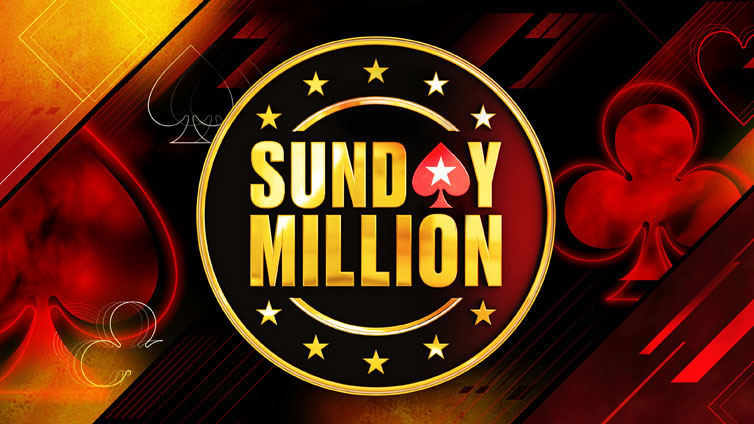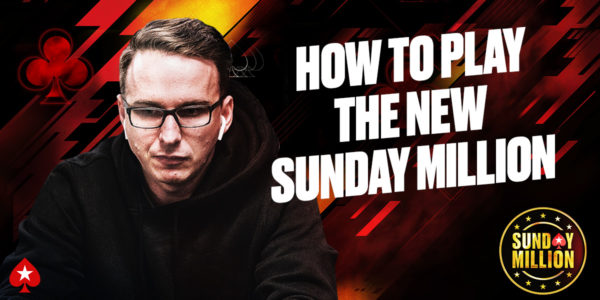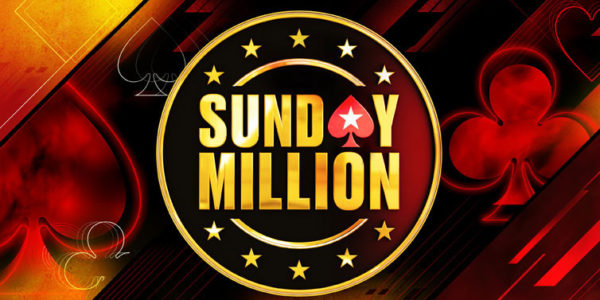Sunday Million Bubble Stage Strategy
In our series on how to attack the Sunday Million on PokerStars, we are going to break away for a bit from the more generalized “stages” to talk about a specific point in the tournament, the bubble.
While there may be multiple bubbles in a tournament, the two biggest by far are the money bubble and the final table bubble. Why are these relevant? In short, they are large pay jumps. The jump from the final table bubble to the final table is generally a significant pay jump. In addition, there is some prestige that goes along with being able to say you made a final table of a major tournament like the Sunday Million. In a large live event, there may be TV time and/or sponsorship benefits as well. In short, there are a number of reasons why some players may tighten up significantly, whether consciously or subconsciously, on a final table bubble.
Likewise, while the money bubble may not carry with it some of the additional ego-boosting perks that come along with final tabling, it is still a significant money jump none the less, and in a tournament like the Sunday Million, this will be tangible to many players.
Let’s use a recent SCOOP $215 buy-in Sunday Million Edition event as an example. In this tournament, there were 6632 entrants and the tournament paid 943 places. The pay jump between 944th and 943rd was $448.72. Let’s start by identifying a few player types and how they may view this money bubble, then talk about how you can adjust to it yourself.
The Professional or other solid winning players
While these players are well bankrolled for the event, they also understand ICM implications of a pay jump from $0 to $448, and will adjust to this bubble according to the chips stacks and what they see opponents doing. If they are really short, like 3 big blinds, they will likely be very tight in an effort to secure $448 before putting their tiny stack at risk. Should they get all in and double up, they will still be very short stacked and their chances to run deep are not enhanced much, certainly not a risk/reward ratio commensurate with their zero payouts should they bust on the bubble. With more chips, they will likely be looking to exploit other players who seem desperate to min cash and are overfolding (playing way too tight) as a result.
The casual or fun player
This player likely places extra importance on simply cashing. Telling their family and friends they cashed the Sunday Million is desirable for them. While they may still be willing to play hands on the bubble, any confrontation that would put their entire stack at risk will likely be shied away from.
The micro stakes player
With the numerous micro stake buy in satellites to the Sunday Million that are available, there will be players in the field who are micro players taking their shot. For a player who normally plays $2 and lower buy-ins, and has $57.24 in their account, a $448 min-cash is a tangible bankroll event. Now that they are here, on the verge of realizing this windfall, you can expect them to avoid any and all risk to falling short of grabbing the cash.
How can you tell who is who? Without knowledge of what buy-ins your opponents normally play, there is a tool in the PokerStars client that may be helpful. From the PokerStars lobby, select Tools, Find…, A Player, and type in their screen name. If you find:
- Someone is playing 3 other tables of buy-in $5 and lower: Micro stakes player
- Someone is only playing the Sunday Million, 1 tabling: Probable Casual/Fun player
- Someone is playing 8 tables with buy-ins of $20+: Pro/reg
- Someone has their player search blocked: Most likely a reg
From here, the adjustments to make are mostly logical. Players who will overfold to secure a min-cash, we can steal relentlessly from if we have a stack that covers them and thus can threaten their tourney life. Make sure you do this in a sensible way. For example, let’s say it folds to us in the small blind. We have a 15bb stack and the big blind has 12bb’s. If the BB is a micro stakes player, we can raise small with any 2 cards and win the blinds and antes often enough to turn an immediate profit. We don’t need to put 12 big blinds at risk since we expect this player type to overfold to our raise specifically because of the bubble situation. Thus we can simply raise and fold to a shove, knowing it’s probable they have a bona fide monster when they re-raise us. If we raise to 2.2x, we are trying to win roughly 2.5x total from the blinds/antes. We need to get a fold about 47% of the time to break even on this steal. 99+/AQ+ is just over 5% of starting hands. Even if we double that or more, it should be easy to see we will get folds upwards of 80%+ of the time on the conservative side in this situation. Exploit it.
The final table bubble, while it has the same concepts at play, does have distinct differences from the money bubble as well:
- Players are no longer faced with the proposition of “going home empty”, as a significant score has already been achieved.
- The composition of players will likely be stronger, i.e. more pro/reg heavy.
- Play is shorthanded, with 2 tables playing down to 5 players each until the eventual 9 handed final table is reached.
Still use the same principles we used to attack the money bubble. This time however we will adjust. Let’s take the same SB/BB situation used above, where we have 15bb’s in the small blind position and our opponent has 12bb’s. This time however our opponent is a known mid-stakes reg and winning player. Now a min-raise with our entire range to steal may not work as well as before. The strong player will move all in with a reasonable number of hands to leverage fold equity on us, something that wasn’t a concern on the money bubble vs. the desperate micro player. The better play for us is probably to simply raise all-in directly, not with all hands, but with a reasonable ICM type range that can be found on good push/fold charts for a 12bb stack. The strong player will probably call us somewhat correctly, but still fold a bit more than they should according to ICM call ranges because they perceive an edge over the remaining field, or perceive that we are not actually shoving as wide as we “should” be in this spot. And they may not be 100% versed in what the call range should be themselves, naturally folding some of the weaker hands that are correct calls but not intuitive.
Understanding bubble play and when to attack is an integral part of a successful tournament strategy. Strong players well versed in this can chip up nicely at these points of the tournament, while less savvy players will decrease their stack and equity in the event either by folding too frequently or making silly ICM plays that cost them real money. Be ready, stay calm and focused on the situation, and exploit it when possible to maximize your value, and you’re that much more likely to have a successful tournament.
Read the full Sunday Million strategy series:
1. Stategy for Success in Sunday Million Satellites
2. Attacking the Sunday Million Structure
3. Sunday Million Tips
4. Sunday Million Early Game Strategy
5. Sunday Million Mid-Game Strategy
6. Sunday Million Bubble Strategy
7. Sunday Million Final Table Strategy










